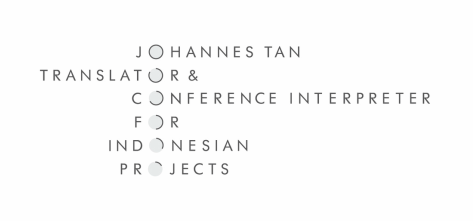Between Stockholm Syndrome and Lima Syndrome
Part 41: Linear Thinking - Seeing the Trees without the Forest

The eye cannot see itself, but the human brain can certainly think of itself.
-OLD CHINESE PROVERB
Dr. Taylor's observation as described in Part 40 (Alternative Thought Processes) is actually far from new. What is new is her insider's perspective. Even in the mid-19th century, French neurosurgeon Pierre Paul Broca (1824-1880) noted that damage to the left hemisphere often results in speech impairment, while that on the right side more likely causes attention deficit and difficulties in retaining spatial. Broca’s discovery was further supported by Austrian neurologist Carl Wernicke (1848-1905) who identified the Wernicke’s area in the left brain that is responsible both for comprehension and vocabulary skills.
In a classic experiment cited in Scientific American magazine (July 2009), Dean C. Dells of the University of California, San Diego, and his colleagues asked brain-damaged patients to study a picture of a large capital H which is made up of smaller A’s, then redraw it from memory. Patients with damage to the right hemisphere—thus dependent solely on the left hemisphere—often drew simply scattered random A’s over the page. On the other hand, patients with damage to the left hemisphere often just drew a large capital H with no A’s. The experiment shows that while patients with damage to the right hemisphere (thus dependent solely on the left hemisphere) see minute details and fail to see the Big Picture, while patients with damage to the left hemisphere (thus dependent solely on the right hemisphere) see the Big Picture and fail to observe minute details. In a nutshell, the left hemisphere facilitates details, while the right one facilitates the Big Picture. While left hemisphere facilitates seeing the trees without the forest, the right one facilitates seeing the forest with the trees.
This brings us back to Part 40 (Alternative Thought Processes). You may recall that Maltese physician and psychologist Edward de Bono (b. 1933) coined new terms in thought processes, most notably "lateral thinking" and "parallel thinking." Parallel thinking, according to de Bono, is a constructive alternative to "adversarial thinking" or "linear thinking", long advocated by what he called "the Greek gang of three": Socrates (469-399 BC), Plato (427-348 BC) and Aristotle (384-322 BC). It focuses more on explorations outside the box, thus looking for "what can be" rather than for "what is."
Not surprisingly, adversarial or linear thinking, by default, nourishes monotheism, monopoly of truth, and totalitarianism as it applies a reductionist and dialectic "either/or" approach (and vice versa). On the other hand, parallel thinking, by default, nourishes pluralism and values diversity of opinions as it applies a holistic "both+and" approach (and vice versa). While historically one approach has generated reductionism, cruelty and violence in the great Abrahamic religions, the other has inspired pacifism and holism in Zen-inspired martial arts.
What seemed like a paradox—violence in Abrahamic religions, pacifism in Zen-inspired martial arts—now looks more and more like logical consequences in which thought processes influence behavior. All we have to do is to synthesize five lessons. First, is the parable of Tanzan and Ekido in Part 23 (Do We Choose a Belief or Does a Belief Choose Us?). Second, is the parable of The World Fair of Religions in Part 10 (The Pope who would have Burned his own Father). Third, is Edward de Bono's notion of parallel thinking. Fourth, is Dr. Jill Bolte Taylor's feeling of deep inner peace due to her left brain stroke. Fifth, is the clinical experiment on brain-damaged patients conducted by Dean C. Dells of the University of California, San Diego.
When the dust settles, the violence in religions and pacifism in Zen-inspired martial arts is not a matter of "in spite of." Instead, it's a matter of "because of."
[To be continued.]
Johannes Tan, Indonesian Translator & Conference Interpreter
-OLD CHINESE PROVERB
Dr. Taylor's observation as described in Part 40 (Alternative Thought Processes) is actually far from new. What is new is her insider's perspective. Even in the mid-19th century, French neurosurgeon Pierre Paul Broca (1824-1880) noted that damage to the left hemisphere often results in speech impairment, while that on the right side more likely causes attention deficit and difficulties in retaining spatial. Broca’s discovery was further supported by Austrian neurologist Carl Wernicke (1848-1905) who identified the Wernicke’s area in the left brain that is responsible both for comprehension and vocabulary skills.
In a classic experiment cited in Scientific American magazine (July 2009), Dean C. Dells of the University of California, San Diego, and his colleagues asked brain-damaged patients to study a picture of a large capital H which is made up of smaller A’s, then redraw it from memory. Patients with damage to the right hemisphere—thus dependent solely on the left hemisphere—often drew simply scattered random A’s over the page. On the other hand, patients with damage to the left hemisphere often just drew a large capital H with no A’s. The experiment shows that while patients with damage to the right hemisphere (thus dependent solely on the left hemisphere) see minute details and fail to see the Big Picture, while patients with damage to the left hemisphere (thus dependent solely on the right hemisphere) see the Big Picture and fail to observe minute details. In a nutshell, the left hemisphere facilitates details, while the right one facilitates the Big Picture. While left hemisphere facilitates seeing the trees without the forest, the right one facilitates seeing the forest with the trees.
This brings us back to Part 40 (Alternative Thought Processes). You may recall that Maltese physician and psychologist Edward de Bono (b. 1933) coined new terms in thought processes, most notably "lateral thinking" and "parallel thinking." Parallel thinking, according to de Bono, is a constructive alternative to "adversarial thinking" or "linear thinking", long advocated by what he called "the Greek gang of three": Socrates (469-399 BC), Plato (427-348 BC) and Aristotle (384-322 BC). It focuses more on explorations outside the box, thus looking for "what can be" rather than for "what is."
Not surprisingly, adversarial or linear thinking, by default, nourishes monotheism, monopoly of truth, and totalitarianism as it applies a reductionist and dialectic "either/or" approach (and vice versa). On the other hand, parallel thinking, by default, nourishes pluralism and values diversity of opinions as it applies a holistic "both+and" approach (and vice versa). While historically one approach has generated reductionism, cruelty and violence in the great Abrahamic religions, the other has inspired pacifism and holism in Zen-inspired martial arts.
What seemed like a paradox—violence in Abrahamic religions, pacifism in Zen-inspired martial arts—now looks more and more like logical consequences in which thought processes influence behavior. All we have to do is to synthesize five lessons. First, is the parable of Tanzan and Ekido in Part 23 (Do We Choose a Belief or Does a Belief Choose Us?). Second, is the parable of The World Fair of Religions in Part 10 (The Pope who would have Burned his own Father). Third, is Edward de Bono's notion of parallel thinking. Fourth, is Dr. Jill Bolte Taylor's feeling of deep inner peace due to her left brain stroke. Fifth, is the clinical experiment on brain-damaged patients conducted by Dean C. Dells of the University of California, San Diego.
When the dust settles, the violence in religions and pacifism in Zen-inspired martial arts is not a matter of "in spite of." Instead, it's a matter of "because of."
[To be continued.]
Johannes Tan, Indonesian Translator & Conference Interpreter

 RSS Feed
RSS Feed